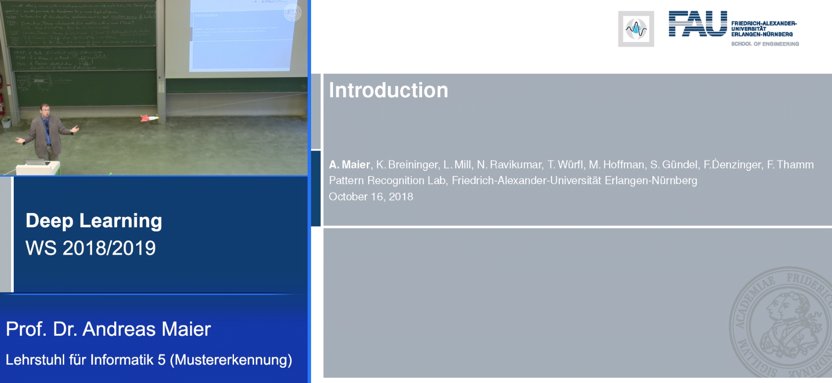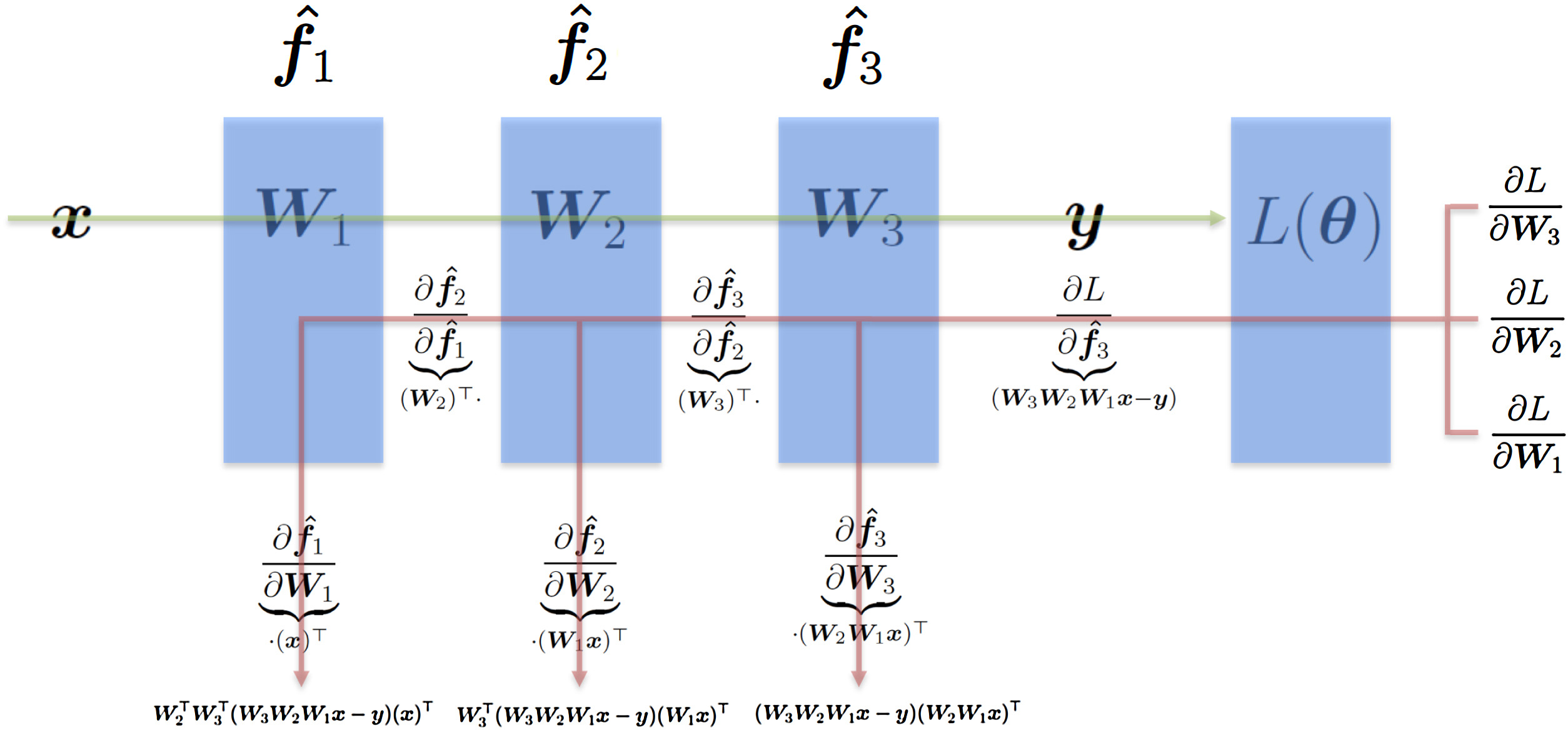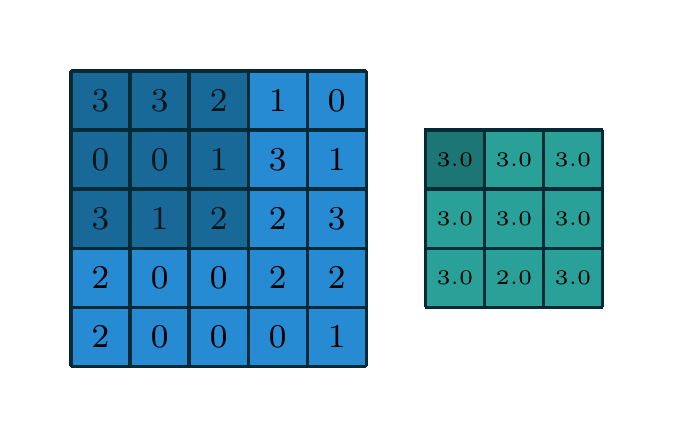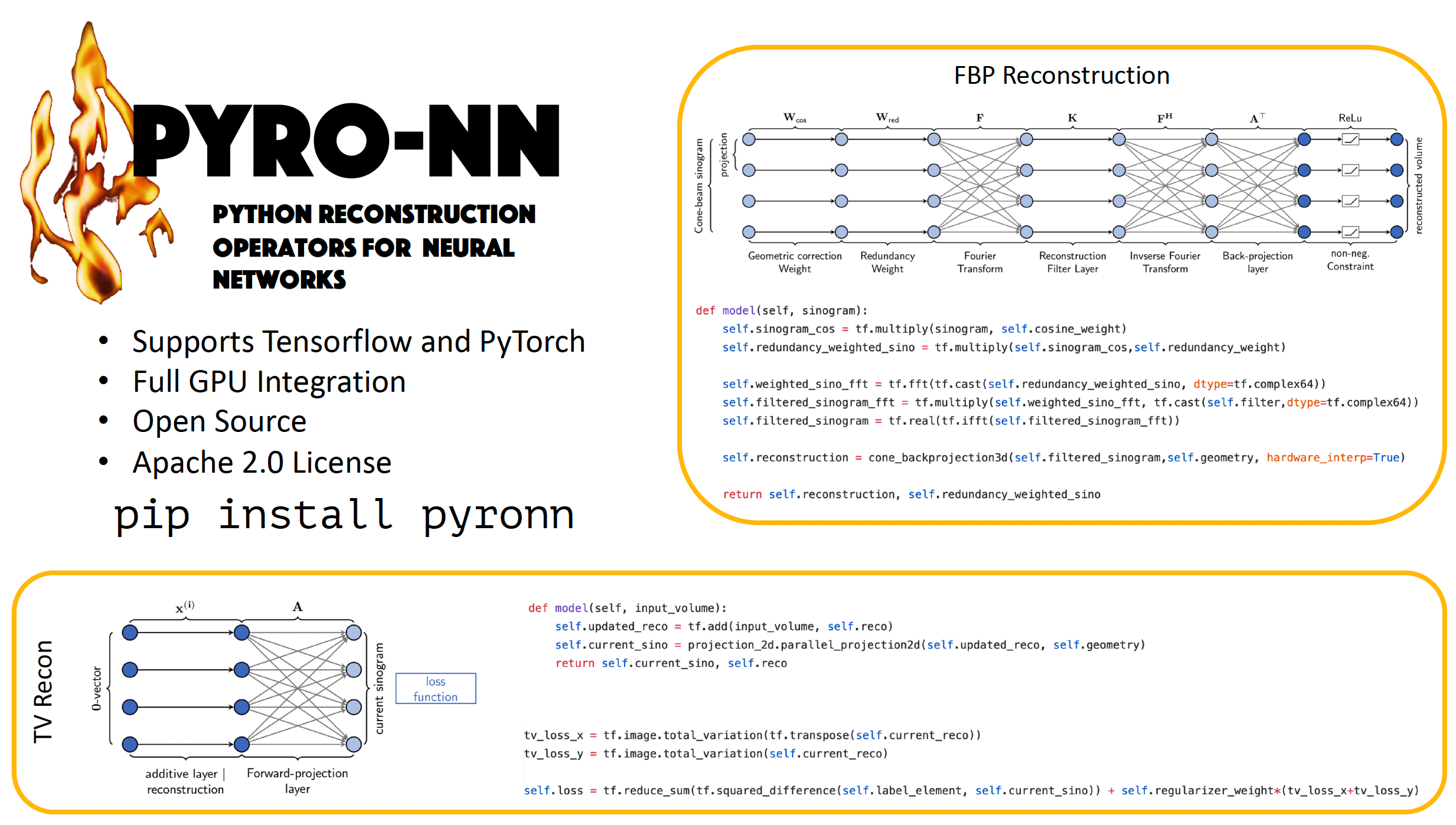Free Machine and Deep Learning Resources
Video Lectures
There is a high demand for free resources concerning deep learning. For this reason, we decided to host our lecture video recordings online. Note that the lecture is adapted each semester to incorporate the latest state-of-the-art.
Deep Learning Video Lecture Summer 2018
Deep Learning Video Lecture Winter 2018/2019
Deep Learning Video Lecture Summer 2019
Deep Learning Video Lecture Winter 2019/20
Deep Learning Video Lecture Summer 2020
Deep Learning Video Lecture Winter 2021 (FAU students | YouTube | Blog Posts)
Lecture Series Mathematics of Deep Learning
Pattern Recognition Video Lecture (FAU students | YouTube | Lecture Slides | Slide Sources | Blog Posts)

Supplementary Documents

Furthermore, we have a short summary of the most important parts of the lecture hosted as an introduction to deep learning. Note that this document is only supplementary material to the lecture and does not contain enough information to pass the oral exam.
Note that the material is licensed under the Creative Commons 4.0 Attribution License. Feel free to share and reuse!
Programming Exercises

Another excellent supplementary material are the iPython Notebooks that we created for the MICCAI Educational Challenge 2018. They are available for download at GitHub.
Introduction to Deep Learning Computed Tomography & Known Operator Learning
We created this material to make access to deep learning image reconstruction and known operator learning as easy as possible. The theory including a refresher on deep learning and reconstruction basics is found in the first presentation Deep Learning Computed Tomography & Known Operator Learning Theory. Next, we prepared an introduction to PYRO-NN and its concepts in Introduction PYRO-NN. Finally, we give extended comments to the example code in Coding Examples using PYRO-NN. The same code is also available online to experiment & modify in our Online PYRO-NN Experimentation Environment.
Further Materials on Known Operators
- Deep Learning Computed Tomography & Known Operator Learning Theory Slides
- Known Operator Learning in Nature Machine Intelligence (including code)
Further Materials on PYRO-NN
- Introduction PYRO-NN
- Coding Examples using PYRO-NN
- Online PYRO-NN Experimentation Environment
- PYRO-NN Paper in Medical Physics (Open Access!)
